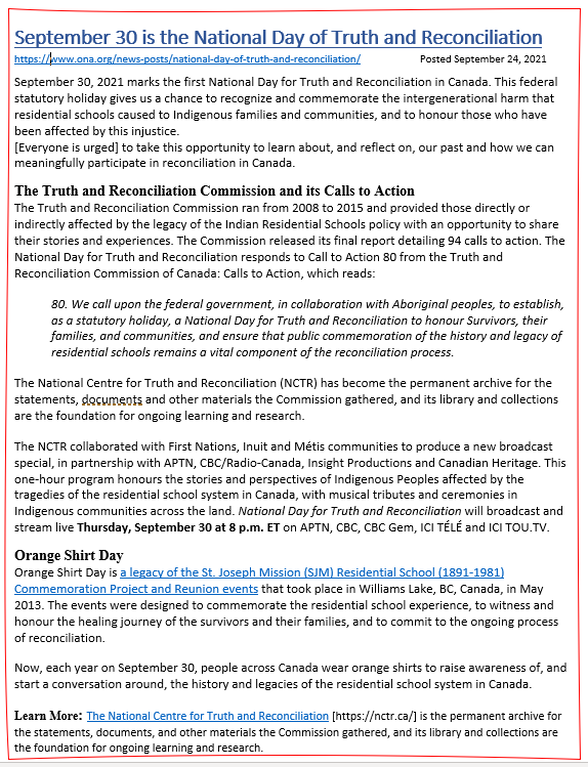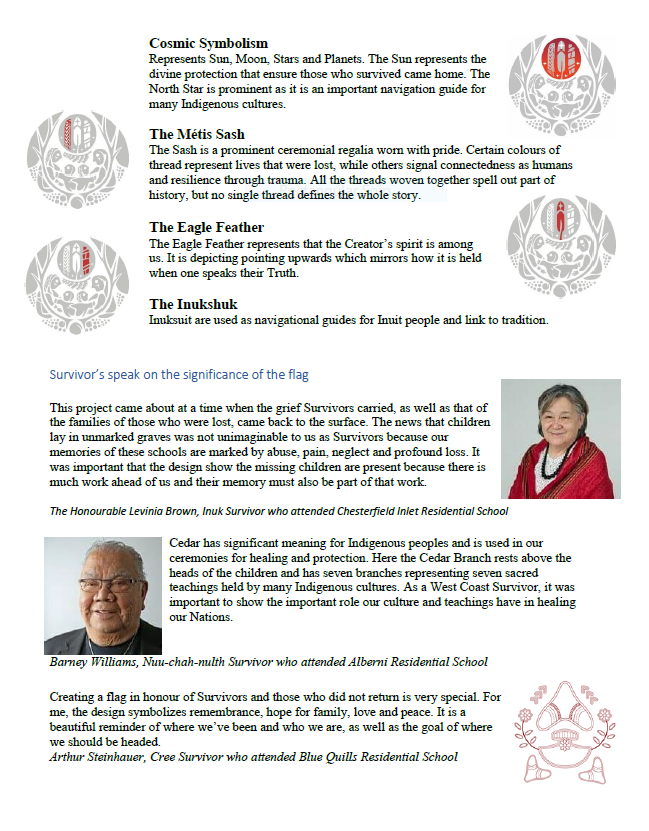Acknowledgement and Thanksgiving for the Land:
We acknowledge the history of the First Nations peoples who inhabited and used the land on which this church stands.
These are the traditional beaver hunting grounds of the Algonquin, Haudenosaunee and Attawandaran (Neutral) peoples;
and the longstanding Indigenous groups of this region are the Anishnaabe Peoples, the Haudenosaunee Confederacy, and the Lenni-Lenape Peoples.
Our church is situated near the Chippewa of the Thames First Nation, Oneida Nation of the Thames, and Munsee-Delaware Nation.
We acknowledge the history of the First Nations peoples who inhabited and used the land on which this church stands.
These are the traditional beaver hunting grounds of the Algonquin, Haudenosaunee and Attawandaran (Neutral) peoples;
and the longstanding Indigenous groups of this region are the Anishnaabe Peoples, the Haudenosaunee Confederacy, and the Lenni-Lenape Peoples.
Our church is situated near the Chippewa of the Thames First Nation, Oneida Nation of the Thames, and Munsee-Delaware Nation.

ORANGE SHIRT DAY SEPTEMBER 26
Sunday September 26 is Orange Shirt Day at Holy Trinity St. Stephen’s Memorial. It is a day we will remember the residential school experience, bear witness and honour to the healing journey of the survivors and their families and commit to the ongoing process of reconciliation. Orange shirts are available for purchase through many vendors and locations. If you would like to purchase an orange shirt, please consider supporting local business and/or businesses that support Indigenous healing and reconciliation such as Atlohsa Gifts located locally at Covent Garden Market (atlohsagifts.com).
Sunday September 26 is Orange Shirt Day at Holy Trinity St. Stephen’s Memorial. It is a day we will remember the residential school experience, bear witness and honour to the healing journey of the survivors and their families and commit to the ongoing process of reconciliation. Orange shirts are available for purchase through many vendors and locations. If you would like to purchase an orange shirt, please consider supporting local business and/or businesses that support Indigenous healing and reconciliation such as Atlohsa Gifts located locally at Covent Garden Market (atlohsagifts.com).
September 30 is the National Day of Truth and Reconciliation
https://www.ona.org/news-posts/national-day-of-truth-and-reconciliation/ Posted September 24, 2021
September 30, 2021 marks the first National Day for Truth and Reconciliation in Canada. This federal statutory holiday gives us a chance to recognize and commemorate the intergenerational harm that residential schools caused to Indigenous families and communities, and to honour those who have been affected by this injustice.
[Everyone is urged] to take this opportunity to learn about, and reflect on, our past and how we can meaningfully participate in reconciliation in Canada.
The Truth and Reconciliation Commission and its Calls to ActionThe Truth and Reconciliation Commission ran from 2008 to 2015 and provided those directly or indirectly affected by the legacy of the Indian Residential Schools policy with an opportunity to share their stories and experiences. The Commission released its final report detailing 94 calls to action. The National Day for Truth and Reconciliation responds to Call to Action 80 from the Truth and Reconciliation Commission of Canada: Calls to Action, which reads:
80. We call upon the federal government, in collaboration with Aboriginal peoples, to establish, as a statutory holiday, a National Day for Truth and Reconciliation to honour Survivors, their families, and communities, and ensure that public commemoration of the history and legacy of residential schools remains a vital component of the reconciliation process.
The National Centre for Truth and Reconciliation (NCTR) has become the permanent archive for the statements, documents and other materials the Commission gathered, and its library and collections are the foundation for ongoing learning and research.
The NCTR collaborated with First Nations, Inuit and Métis communities to produce a new broadcast special, in partnership with APTN, CBC/Radio-Canada, Insight Productions and Canadian Heritage. This one-hour program honours the stories and perspectives of Indigenous Peoples affected by the tragedies of the residential school system in Canada, with musical tributes and ceremonies in Indigenous communities across the land. National Day for Truth and Reconciliation will broadcast and stream live Thursday, September 30 at 8 p.m. ET on APTN, CBC, CBC Gem, ICI TÉLÉ and ICI TOU.TV.
Orange Shirt DayOrange Shirt Day is a legacy of the St. Joseph Mission (SJM) Residential School (1891-1981) Commemoration Project and Reunion events that took place in Williams Lake, BC, Canada, in May 2013. The events were designed to commemorate the residential school experience, to witness and honour the healing journey of the survivors and their families, and to commit to the ongoing process of reconciliation.
Now, each year on September 30, people across Canada wear orange shirts to raise awareness of, and start a conversation around, the history and legacies of the residential school system in Canada.
Learn More: The National Centre for Truth and Reconciliation [https://nctr.ca/] is the permanent archive for the statements, documents, and other materials the Commission gathered, and its library and collections are the foundation for ongoing learning and research.
https://www.ona.org/news-posts/national-day-of-truth-and-reconciliation/ Posted September 24, 2021
September 30, 2021 marks the first National Day for Truth and Reconciliation in Canada. This federal statutory holiday gives us a chance to recognize and commemorate the intergenerational harm that residential schools caused to Indigenous families and communities, and to honour those who have been affected by this injustice.
[Everyone is urged] to take this opportunity to learn about, and reflect on, our past and how we can meaningfully participate in reconciliation in Canada.
The Truth and Reconciliation Commission and its Calls to ActionThe Truth and Reconciliation Commission ran from 2008 to 2015 and provided those directly or indirectly affected by the legacy of the Indian Residential Schools policy with an opportunity to share their stories and experiences. The Commission released its final report detailing 94 calls to action. The National Day for Truth and Reconciliation responds to Call to Action 80 from the Truth and Reconciliation Commission of Canada: Calls to Action, which reads:
80. We call upon the federal government, in collaboration with Aboriginal peoples, to establish, as a statutory holiday, a National Day for Truth and Reconciliation to honour Survivors, their families, and communities, and ensure that public commemoration of the history and legacy of residential schools remains a vital component of the reconciliation process.
The National Centre for Truth and Reconciliation (NCTR) has become the permanent archive for the statements, documents and other materials the Commission gathered, and its library and collections are the foundation for ongoing learning and research.
The NCTR collaborated with First Nations, Inuit and Métis communities to produce a new broadcast special, in partnership with APTN, CBC/Radio-Canada, Insight Productions and Canadian Heritage. This one-hour program honours the stories and perspectives of Indigenous Peoples affected by the tragedies of the residential school system in Canada, with musical tributes and ceremonies in Indigenous communities across the land. National Day for Truth and Reconciliation will broadcast and stream live Thursday, September 30 at 8 p.m. ET on APTN, CBC, CBC Gem, ICI TÉLÉ and ICI TOU.TV.
Orange Shirt DayOrange Shirt Day is a legacy of the St. Joseph Mission (SJM) Residential School (1891-1981) Commemoration Project and Reunion events that took place in Williams Lake, BC, Canada, in May 2013. The events were designed to commemorate the residential school experience, to witness and honour the healing journey of the survivors and their families, and to commit to the ongoing process of reconciliation.
Now, each year on September 30, people across Canada wear orange shirts to raise awareness of, and start a conversation around, the history and legacies of the residential school system in Canada.
Learn More: The National Centre for Truth and Reconciliation [https://nctr.ca/] is the permanent archive for the statements, documents, and other materials the Commission gathered, and its library and collections are the foundation for ongoing learning and research.

National Indigenous Day of Prayer
We celebrate National Indigenous Day of Prayer as part of National Indigenous Awareness Month and in advance of Canada National Indigenous Peoples Day, June 21 - a day for all Canadians to recognize and celebrate the unique heritage, diverse cultures and outstanding contributions of First Nations, Inuit, and Métis peoples.
The Canadian Constitution recognizes these three groups as Aboriginal peoples, also known as Indigenous Peoples.
Although these groups share many similarities, they each have their own distinct heritage, language, cultural practices, and spiritual beliefs.
In cooperation with Indigenous organizations, the Government of Canada chose June 21, the summer solstice, for National Aboriginal Day. The day was first celebrated in 1996, after it was proclaimed that year by then Governor General of Canada, Roméo LeBlanc, to be celebrated annually on 21 June.
This date was chosen as the statutory holiday for many reasons, including its cultural significance as the Summer solstice, the longest day of the year, and the fact that it is a day on which many Indigenous peoples and communities traditionally celebrate their heritage. It was renamed National Indigenous Peoples Day in 2017 when Canadian Prime Minister, Justin Trudeau released a statement pledging to rename the event. Assembly of First Nations, National Chief Perry Bellegarde supported the proposed change, called it an "important step," citing the terminology used in the landmark United Nations' Declaration on the Rights of Indigenous Peoples.
This day has been celebrated as a statutory territorial holiday in the Northwest Territories since 2001, and in the Yukon since 2017. Currently, however, it is not considered a statutory holiday across the rest of the country.
We celebrate National Indigenous Day of Prayer as part of National Indigenous Awareness Month and in advance of Canada National Indigenous Peoples Day, June 21 - a day for all Canadians to recognize and celebrate the unique heritage, diverse cultures and outstanding contributions of First Nations, Inuit, and Métis peoples.
The Canadian Constitution recognizes these three groups as Aboriginal peoples, also known as Indigenous Peoples.
Although these groups share many similarities, they each have their own distinct heritage, language, cultural practices, and spiritual beliefs.
In cooperation with Indigenous organizations, the Government of Canada chose June 21, the summer solstice, for National Aboriginal Day. The day was first celebrated in 1996, after it was proclaimed that year by then Governor General of Canada, Roméo LeBlanc, to be celebrated annually on 21 June.
This date was chosen as the statutory holiday for many reasons, including its cultural significance as the Summer solstice, the longest day of the year, and the fact that it is a day on which many Indigenous peoples and communities traditionally celebrate their heritage. It was renamed National Indigenous Peoples Day in 2017 when Canadian Prime Minister, Justin Trudeau released a statement pledging to rename the event. Assembly of First Nations, National Chief Perry Bellegarde supported the proposed change, called it an "important step," citing the terminology used in the landmark United Nations' Declaration on the Rights of Indigenous Peoples.
This day has been celebrated as a statutory territorial holiday in the Northwest Territories since 2001, and in the Yukon since 2017. Currently, however, it is not considered a statutory holiday across the rest of the country.

The Canadian Native Flag was designed by Kwakwaka’wakw artist Curtis Wilson. His design for the flag is meant to represent First Nations in Canada to the public. We hope this flag brings a better understanding of the First Nations of our country and a vision for a unified Canada that still revels in its diversity.
www.canadiannativeflag.ca/
www.canadiannativeflag.ca/






